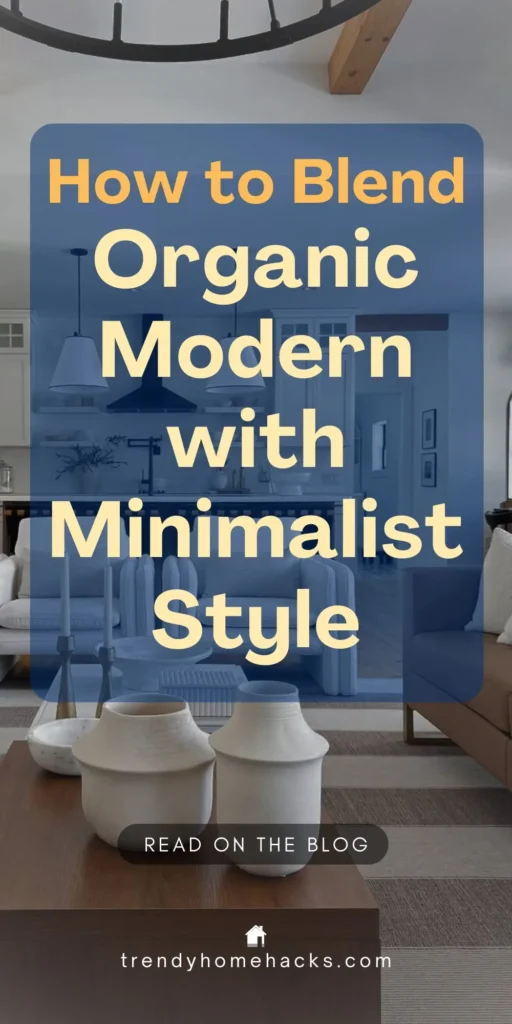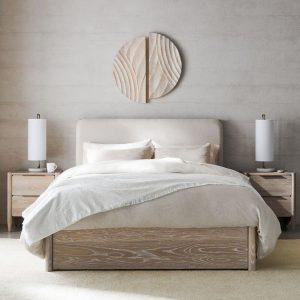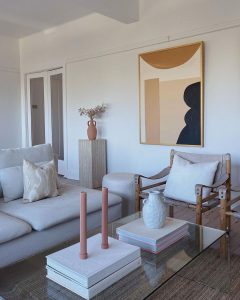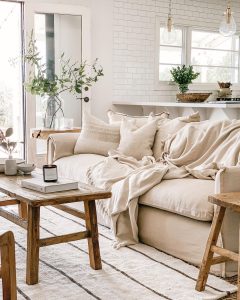There’s something deeply soothing about a space that feels both simple and grounded in nature. It’s a timeless combination: how to blend organic modern and minimalist decor to create a home that feels warm, effortless, and livable.
Organic modern design brings the soul. It invites in natural textures, earthy tones, and handcrafted touches that calm a space. Minimalism creates clarity. It offers room to breathe, where every object has a purpose.
When you blend the two, something special happens. You create a home that’s not just beautiful. It becomes deeply restorative.
In this guide, we’ll explore how to bring these styles together. You’ll find tips on color, texture, and layout that help you create a look that feels both clean and cozy.
Whether you’re reimagining one room or your whole home, this gentle approach invites you to decorate with heart.
What Is the Difference Between Organic Modern and Minimalist Decor?
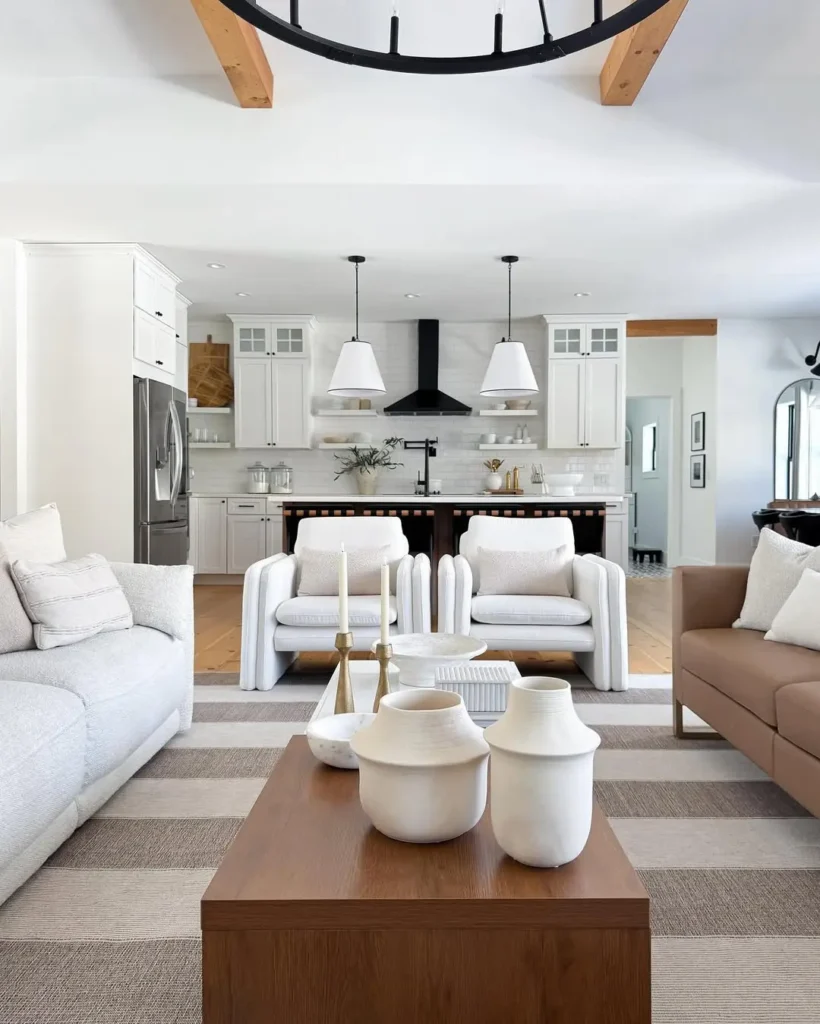
At first glance, these two styles might seem like close cousins. And in many ways, they are. But each style adds its own unique character to a space.
Organic modern is rooted in nature. Think warm wood tones, soft textiles, raw stone, and pieces that feel handmade. If you want to dive deeper into the look, explore the foundational principles of organic modern decor .
Minimalist decor takes a quieter approach—focused on restraint, intention, and space to breathe. It favors clean lines, open space, and a clear sense of purpose. The palette stays neutral. The mood feels calm and unburdened. To explore this design philosophy further, check out how to achieve a minimalist look that embraces simplicity and function.
While minimalism brings clarity, organic modern adds warmth. One clears the visual noise. The other fills the space with texture and soul.
Together, they create balance. A room that feels grounded and thoughtful. A home that’s pared back, yet full of life.
How to Use a Neutral Color Palette in Organic Modern Minimalist Design
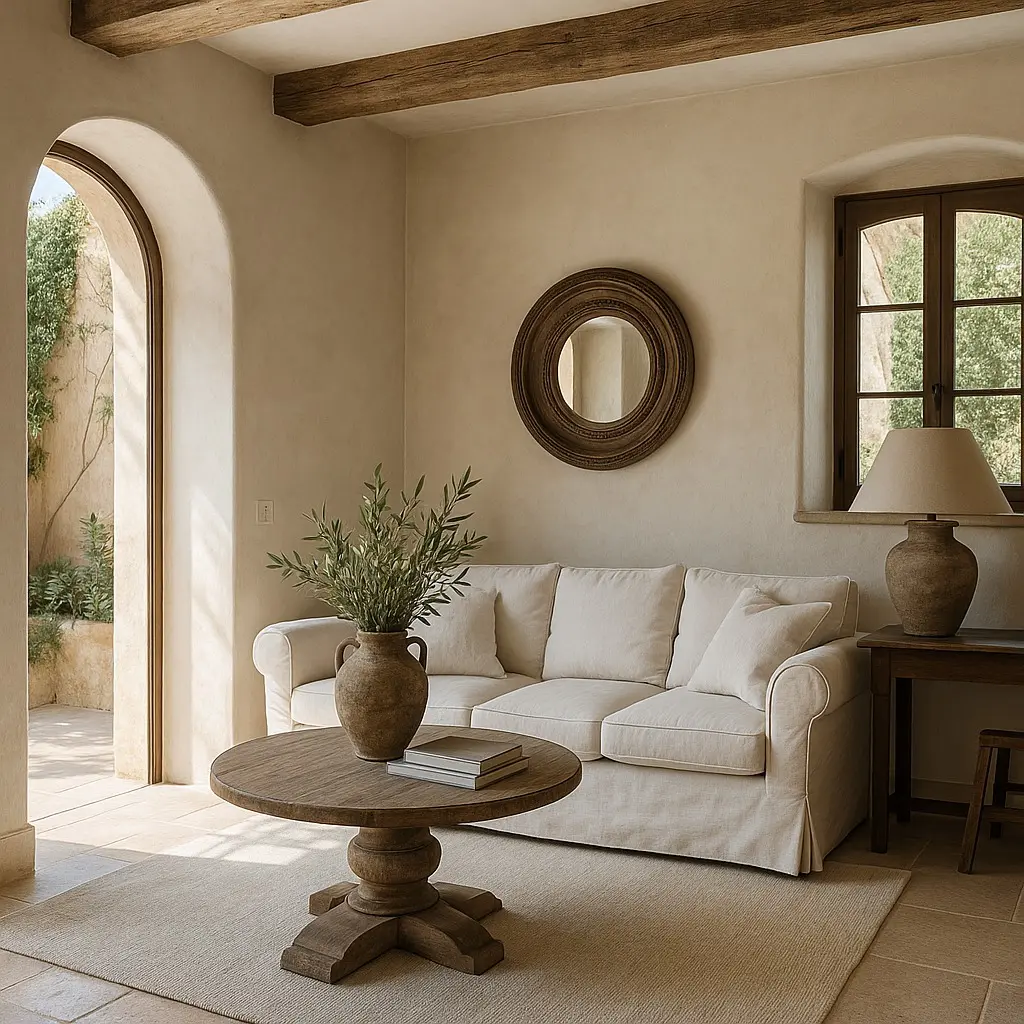
Color is where the magic of this blend often begins. Both organic modern and minimalist styles lean into neutrals—but in slightly different ways.
Organic modern prefers earthier tones. Think sand, clay, warm whites, and soft mushroom hues. These colors feel grounding. They echo nature and add quiet depth.
Minimalist spaces tend to stay cooler. Crisp whites, pale grays, and subdued beiges create a sense of lightness and calm. But when layered with warmer shades, they bring a lived-in feel.
The secret is mixing these tones with intention. Start with a neutral base—like off-white walls or pale wood flooring. Then layer in neutral tones and warm accents to build depth and warmth.
Keep the palette tight, but varied. Layer tone on tone. Try linen on ivory. Oatmeal next to bone. These subtle shifts add interest without visual clutter.
If you’re unsure where to begin, explore how to craft a calming color palette that reflects minimalist serenity. It’s a gentle way to find the colors that feel right for your space—and your style.
Why “Less Is More” Is Essential to Blend Organic Modern and Minimalist Decor
This design style isn’t about having less for the sake of it. It’s about making space for what matters most.
Minimalism invites us to pare back. It encourages us to choose pieces with intention. In an organic modern space, that mindset still holds—but with a softer edge.
Instead of empty surfaces and stark rooms, you’ll find warmth in simplicity. A handcrafted bench by the entry. A ceramic lamp on a clean-lined console. It’s not about filling every corner. It’s about curating what feels essential.
Choose pieces that speak through their material, shape, or story. Let wood grain, linen, stone, and matte finishes take center stage. These tactile elements invite touch and tell a quiet story.
For larger investments, prioritize quality. A sculptural chair or solid wood table may cost more. But it lasts longer and adds soul. If you’re furnishing a space from scratch, explore these practical and affordable ways to bring natural elements into your space. They’re a beautiful foundation for creating warmth with intention.
Ultimately, a less-is-more approach makes room for calm. It invites slower living and helps each item feel intentional.
How Organic Textures and Shapes Enhance a Minimalist Decor Style
When you’re working with fewer pieces, texture becomes everything. It adds depth, interest, and warmth—without overwhelming the space.
Start with foundational materials that feel honest and raw. Think nubby linen, brushed cotton, natural wool, and unfinished wood. These elements ground the space while keeping it soft and approachable.
Incorporate curved shapes to balance the clean lines of minimalism. A round coffee table, an arched mirror, or a softly sculpted chair can shift the energy in a room. These forms echo nature and bring a gentle rhythm to the space.
Mixing materials adds another layer of interest. Try pairing smooth stone with woven baskets. Or contrast matte ceramic with sleek metal. When done intentionally, these combinations tell a rich, layered story.
If you’re new to this approach, see how earthy textures help bring organic warmth into modern interiors. It’s not about being rustic. It’s about using texture to soften and humanize minimalism.
These subtle shifts—of shape, of feel, of finish—can transform a simple room into one that feels lived-in and alive.
Decorating Tips to Blend Organic Modern and Minimalist Decor with Accessories
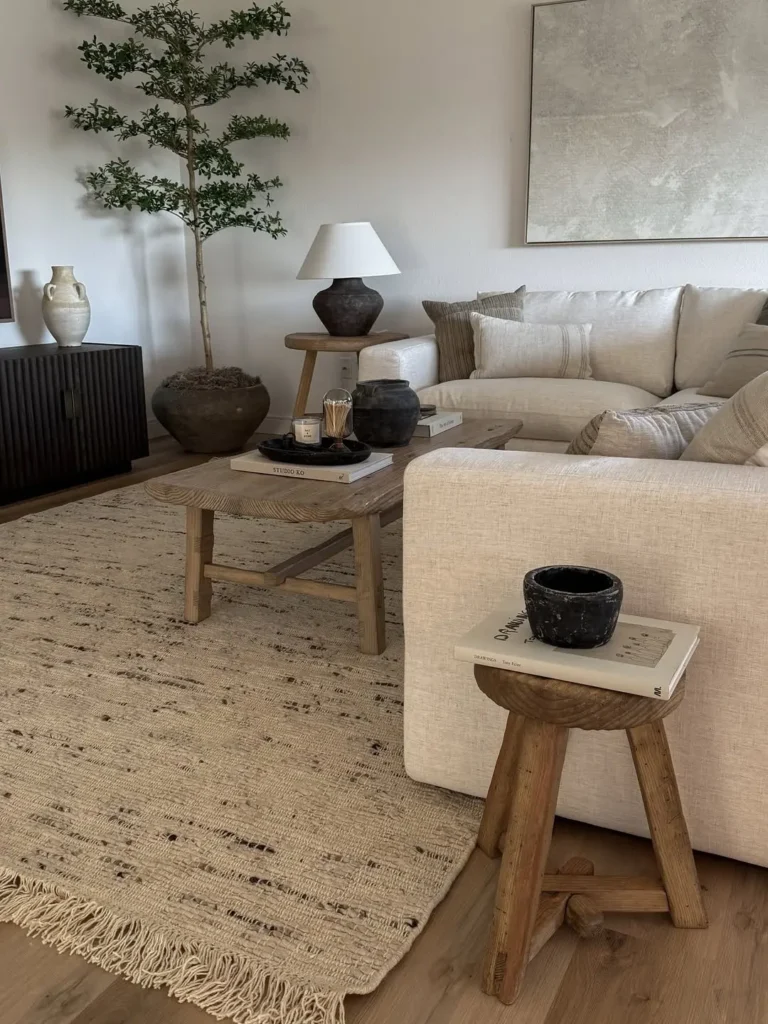
Accessories may be small, but in a minimalist home, they carry a lot of weight. Every object on display should earn its place—and say something soft but meaningful.
Choose pieces that reflect the natural world. A hand-thrown vase. A stack of weathered books. A single ceramic bowl with a beautiful curve. These details bring quiet beauty to the room without overwhelming it.
Leave space between objects. Shelves and surfaces don’t need to be filled. The pauses between pieces are part of what makes minimalist styling feel restful.
Stick to a natural palette and limited materials. Let wood, clay, linen, and glass do the talking. For more ideas, browse through these examples of how to style your space with natural elements in a way that feels intentional and warm.
The key is to curate, not decorate. Choose accessories that feel like they belong—not just because they match, but because they add meaning.
In minimalist organic modern design, less truly is more—especially when every piece tells a story.
Bringing Nature Indoors in a Minimalist Way
Nature is the soul of organic modern design—and a grounding force in minimalist homes. The key is to bring it in with care.
Start small. A single branch in a clay vessel. A leafy plant in a raw terracotta pot. These elements soften a space and draw the eye without feeling fussy.
Choose vessels that match your palette and materials. Think matte finishes, earthy tones, and simple shapes. These choices create harmony between the object and the nature it holds.
Let light play a role, too. Open up windows. Pull back heavy curtains. Let sunlight filter across your walls and floors. It’s one of the simplest ways to make a room feel alive.
To take it further, explore ways to incorporate natural elements into your home that promote calm and connection. These quiet touches—wood, greenery, stone—can completely shift the mood of a space.
In a minimalist home, a little nature goes a long way. It brings balance, softness, and something you can’t buy: a feeling of ease.
How to Balance Soft and Structured Elements in Organic Modern Decor
A well-balanced space doesn’t just look good—it feels right. One of the best ways to achieve that feeling is by mixing softness with structure.
Think of pairing sleek stone countertops with flowing linen curtains. Or a minimal sofa with a chunky wool throw. These contrasts create harmony. One grounds the space. The other welcomes you in.
Use hard materials—like metal, stone, or concrete—as anchors. Then soften them with texture. Jute rugs, upholstered benches, and tactile ceramics add warmth without adding clutter.
Don’t be afraid to let opposites sit side by side. That’s what gives a space depth. A matte black fixture beside a handmade vessel. A raw wood bench beneath a modern light fixture. It’s all about balance.
For more inspiration, explore the essential materials and design elements that define a minimalist, grounded dining space. The same ideas apply across rooms—whether it’s the living room, bedroom, or bath.
These soft-meets-structured pairings help a space feel layered, not loud. They create rooms that are simple, but never sterile.
Conclusion: Designing a Calm, Cohesive Home with Organic Minimalist Style
Blending organic modern and minimalist decor isn’t about following rules. It’s about shaping spaces that feel good to come home to.
When you lead with natural materials, thoughtful restraint, and warm simplicity, your home becomes more than a styled space. It becomes a place to slow down, breathe deep, and feel grounded.
Start small. Trust your eye. Let your home grow into something that reflects both clarity and comfort—quietly, beautifully, and in your own way. For a deeper dive into this style, explore the complete guide to organic modern décor.
Happy decorating!
Frequently Asked Questions about Blending Organic Modern and Minimalist Decor
Can I blend these styles in a small space or rental home?
Absolutely. Start with neutral tones, multi-purpose furniture, and natural textures. Even a small change—like swapping out mass-produced decor for something handmade—can make a big impact in a small space.
How do I prevent my home from feeling too cold or empty?
Use texture and natural materials to warm things up. Add softness through linen, jute, wool, and curved forms. For more ideas, see how to use earthy textures to bring warmth into modern design (How to Include Earthy Textures in Organic Modern Design).
What’s the biggest mistake to avoid when combining these styles?
Trying to do too much at once. This look is about restraint and thoughtfulness. Avoid clutter. Instead, invest in a few timeless, high-quality pieces that speak to both simplicity and warmth.
How can I begin blending organic modern and minimalist styles?
Start with one room. The living room or bedroom is a great place to begin. Keep things simple with clean lines, earthy textures, and soft, natural hues.For step-by-step ideas, explore how to achieve the organic modern living room aesthetic (How to Achieve the Organic Modern Living Room Aesthetic).
Don’t forget to save this pin to your board for later!
